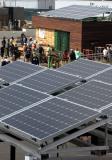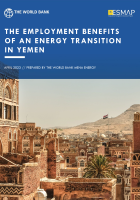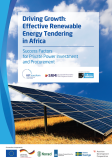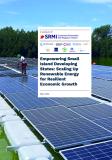Publications
In 2019, the renewable energy (RE) sector employed at least 11.5 million people worldwide. Of these, 3.8 million worked in solar PV. To date, RE employment opportunities are mainly found in a limited number of countries, such as China, Brazil, the United States, India, and member states of the European Union. Several factors including the scale of national deployment, the magnitude of industrial policies, changes in supply chains’ geographic footprint and in trade patterns, and industry consolidation trends determine how and where RE jobs are created. The transition from conventional energy to RE and energy efficiency (EE) can lead to the creation of many more RE jobs. In its “Global Renewables Outlooks 2020” report, the International Renewable Energy Agency (IRENA) estimated that there could be 30 million RE jobs by 2030 and 42 million by 2050, and that EE jobs could employ up to 21.3 million people, doubling the number of jobs in 2020. These new jobs are expected to exceed the jobs lost in fossil fuels and nuclear energy, generating net job gains. However, since the case of each country is unique, country-specific investigations are required to assess the effect of RE and EE growth on employment. In this context, the World Bank, with funding from the Energy Sector Management Assistance Program (ESMAP), has conducted a series of studies on job creation and replacement based on RE and EE development in three Middle East and North Africa (MNA) countries: The Republic of Yemen, Morocco, and Egypt. This report presents the results for the Republic of Yemen.
Lohse, Ulf.
The Employment Benefits of an Energy Transition in Yemen (English). Umbrella Trust Fund Annual Report. ESMAP Paper. Washington, D.C. : World Bank Group. http://documents.worldbank.org/curated/en/099051123072028548/P1705460663479050bb960b45af733669e




